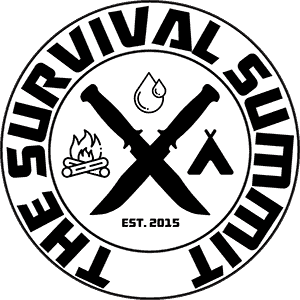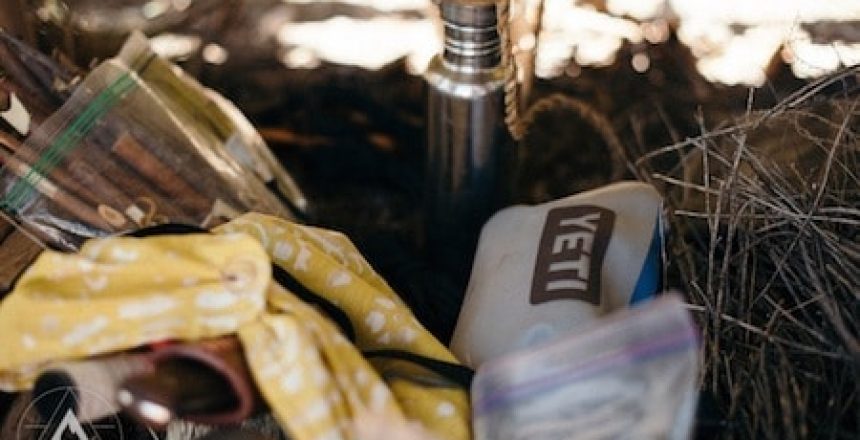Stashes – burial containers
Burial Containers
Is storing stuff in a buried container a good idea? Yes, provided you get a decent container and you put the right stuff in it.
Decently sized storage containers that can be buried range from less than $50 to $200 or more. As with most items, the warning “you get what you pay for” applies here.
Here are some brief guideline for picking an underground container:
- Size. It has to be big enough to hold whatever you what to bury. A stash of cash, silver and gold coins can be the size of a quart jar. Storing a gun and ammonia, even with a tactical breakdown gun, means more room.
- Wall thickness. If the description does not include how thick the lid and walls are or how heavy it is, skip that purchase. Weight can give you an idea of how thick the walls are.
- Seal. How does the container seal? Latches or screw-on? Screw on is best. In addition to an o-ring seal, the threads can have additional sealant.
If you make your own, use Schedule 40 PVC pipes.
WHAT TO STORE
With limited space in any burial storage can, what to store is a major issue.
Money
Topping that list is some sort of money. Fiat paper currency may be worthless, besides which it loses value over time. Gold and silver coins may be purchased from banks. These hold their value over time.
Anywhere from a few hundred dollars to more than $1,000, depending on your budget is good. As you are able to invest more in emergency money, get another can and drop metal money in it.
Gun
Without question, a gun and ammo need to go in the container. Don’t get fancy. You need something, inexpensive, reliable, multi-duty and a common caliber. The Rossi Trifecta was listed as “Best Value” by Field & Stream a few years ago. It has improved since then. You can get .243, .22, .44 mag and 20 gauge barrels. Ammo for all is plentiful and inexpensive. Other companies offer similar gun combos.
Get some Cosmoline. Russia stored Mosin-Nagants in Cosmoline more than 60 years ago. It may take a while to get all the Cosmoline off, but it has kept these old war rifles in pristine shape. Coat the gun in Cosmoline, wrap it in a plastic garbage bag and stow it.
Get some moisture-absorbing packs. Put some in sealable freezer bags with the ammo. These go into the container.
Knives
Survival knives with paracord-wrapped handles are cheap. Treat with Cosmoline, wrap and drop in the container.
Some other things to put in are:
- Rope, paracord is best
- Flint for fire starting
- Assorted stainless steel fish hooks and braided, not monofilament, line
- Wire for making small game snares. Coat with Cosmoline and keep in a plastic bag.
- Waterproof maps of the area and any reservoirs nearby
BURYING THE CONTAINER
Burying the container is going to take more work than anything else. Do not use GPS. The satellite system may stay up, but GPS devices require power. You cannot count on that.
- Stay away from buried utility lines.
- Avoid flood zones.
- Use lasting landmarks.
Don’t count on trees staying put. Hurricanes, tornadoes and fires can eliminate entire forests. Some good landmarks are road intersections, cell tower complexes in rural areas and rural airports. Use these structures as reference points since you need to bury your stash a distance away from these markers.
Burying cans in a power company’s right of way, where the lines are elevated, can work. Utility poles and high-voltage towers are good landmarks. This also makes it easy to mark the location on a map to keep at home or in a vehicle. Be aware that phone companies sometimes bury lines right alongside the elevated power lines. Moving out of the immediate area under the lines is a good idea.
Got other ideas for a SHTF storage can? We’d love to hear them in your comments below.




1 thought on “Stashes – burial containers, what to put in them, where and how to hide them”
People have tested their assumptions about hiding caches (stashes) and have discovered that they could not find what they hid. I am referring to two men who hid a cache of (basicaly junk) and just to determine if they could find it again a year later. GUESS WHAT? They could not find it; and the reason why is very simple. They didn’t measure the depth that they buried their original container.
They knew the vacant lot. They knew the basic area where they made their junk burial. They brought their shovel (to dig with). They wrote notes (like how many steps from a tree to where they made their burial; but it never occured to them to measure (even in ball-park terms, like "elbow deep", the depth. Then, another factor is winter freeze that shifts depth of many items in the ground, but that was not a factor in this particular story. They just didn’t write down that it was about 18 inches deep, and a year later when they dug to 12 inches, they couldn’t find it.
I am experienced in what I say. There are literally many thousands of lost treasure stories that were never refound by the original hiders. If I had to guess, I would guess that the original robber (or whomever) also brought a bottle of whiskey with them (to increase their enjoyment, while clouding their thinking). They didn’t keep track of every detail needed to recover what they buried, and over time their mind blurred their intentiona and goal, and many of these are still in the ground somewhere.
If you are going to bury a stash, you must be precise and keep a record of what you know. Were you digging in clay, were you digging in dirt? If the dirt was moist, why? Were you in a flood zone, or in what is called a swale (a tiny small depthed hollow in the ground that would never be noticable in dry weather, that is a place where rain water runs off along the ground? What are the landmarks that you picked? How did you measure your distances from the landmarks? Did I mention how deep you buried the item or its container? Did I mention what the soil conditions were (a fact you should also record in your notes), If you buried an air-tight container, will wet water and soil "lift it" over the course of a year (probably). Will winter frost heave lift it? Probably. If you buried it in sand and if what you buried was heavy, will lots of wet weather cause the depth of your stash to sink further? Probably. If you are cetain you are digging at the right spot, you can dig a foot deeper, "just in case". But I have used metal detectors on areas where I thought for certain that I knew the precise location of what the metal detector told me, and I couldn’t find a thing. What if the real thing looked for was only 6-inches away from the hole you dug (and it was your 15th hole) , what are you going to do? If you actually inform yourself of everything and anything imaginable about what you buried, the odds are with you that you can recover it, and especially once you go back to your pre-written facts and swear off your assumptions andmemoreis about the originaol hiding of your stuff. Whatever you do, do not assume that anything short of dozens of detials will suffice and including (time of year of burial, ground moisture conditons, ground soil conditions, depth at which you originally buried your item. Did you over-fill your hole so as to expect a year later to find a small mound? Or did you underfill your hole so as to expect a tiny hollow in the ground? You need to micromanage your details to find in a timely way what you8 stashed (and definitelky you need to not rely on friends or partners, unless their micromanged record is the same as your micromanaged record.–and should it vary wildly, then go back the next day and add more data to your record (if you can even find it again).
Comments are closed.